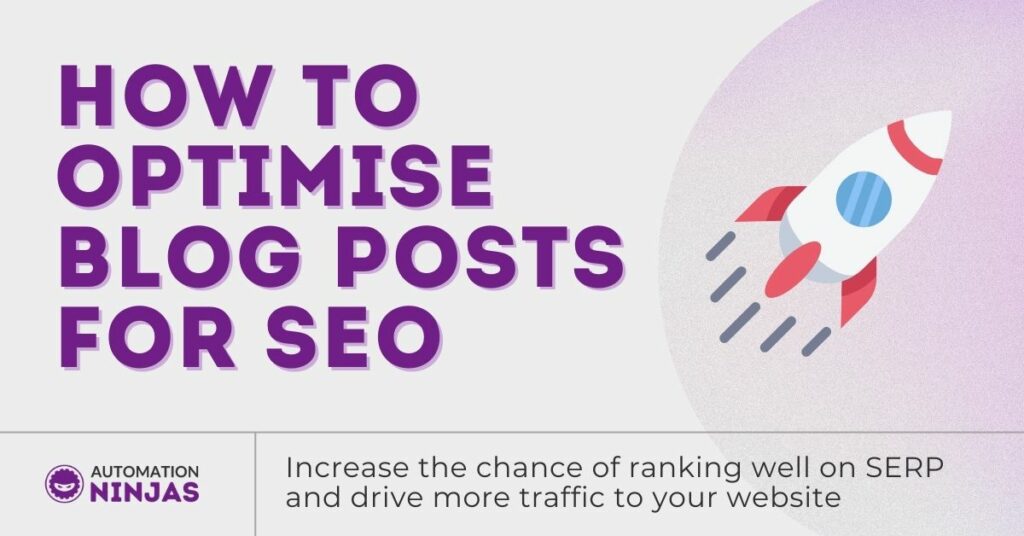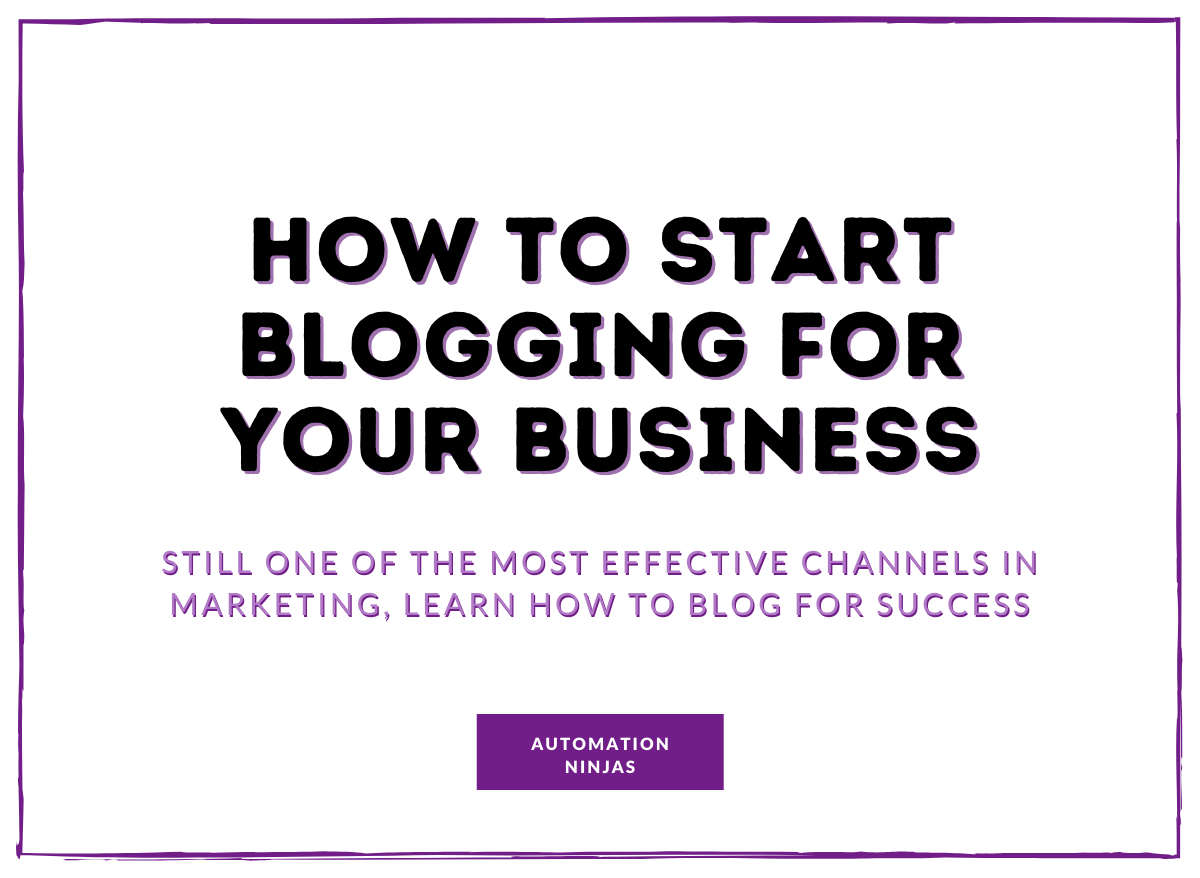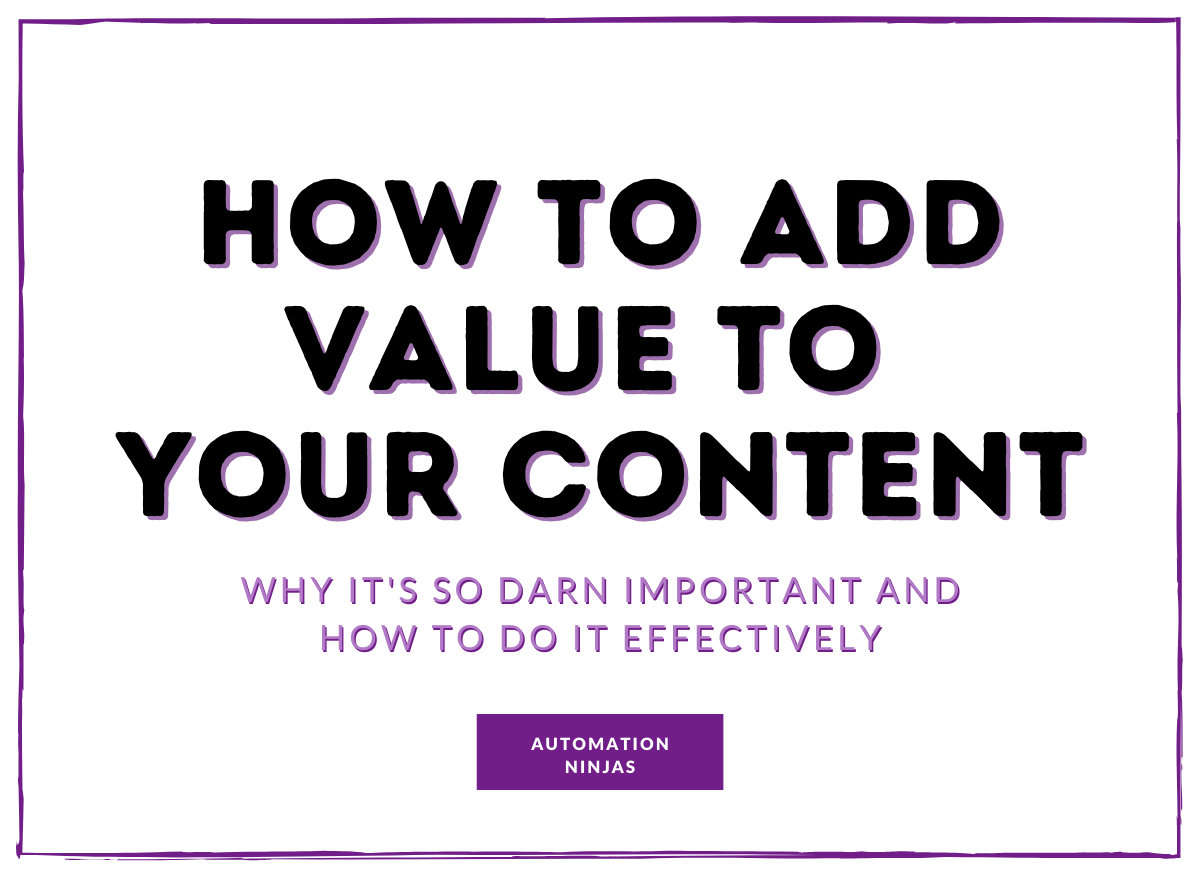If you want to rank better on SERP (search engine results pages) i.e. Google, it's crucial that you optimise your blog posts for SEO. Without it, the results your high-value and engaging content deserves, can seem out of reach.
Allow me to set the scene:
You’re the proud owner of a blog that you put a lot of time and effort into. Your brain is always ticking away, thinking about your next piece of content.
Tracking trends, keeping up with what your target audience is most interested in.
New, fresh content is great! But, when was the last time you optimised some of your old work?
There are actually quite a few reasons why you should be spending more time optimising your current content. It saves time, you keep your content evergreen and you can make sure you’re hitting all of your SEO goals.
You can be creating some of the best content in the world. But, if you’re not making sure that it is SEO focused, your hard work can go to waste.
Now, that doesn’t mean all of the content you’ve produced up until this point is futile. You can make sure it’s all up to scratch and that it is getting you the results that you desire. You’ve just got to optimise!
‘’That sounds great. But, how do I optimise my blog posts for SEO?’’ I hear you ask.
Luckily for you, I’ve got the answers.
This blog is going to shed some light on the why you should and how to optimise your blog posts for SEO.
While there are many tools that you can use to optimise your blog posts, I’m going to be focusing on what we Ninja use: WordPress, Mangools and Yoast. (Yoast Premium SEO plugin for some features).
If you are someone who optimises through a different platform (Semrush, HubSpot, etc), I haven’t forgotten about you! There is a section in this blog with some content optimising tips for SEO that you can use even if you don’t opt for the same platforms we do.
Are you ready? Let’s go!
Why you should optimise your blog posts for SEO
Optimising your blog posts keeps your content fresh and evergreen for those that have intended to land on your page. Not only that, Google will favour you for doing so and reward you by placing you higher in its ranks.
You keep up with your content and Google will make sure that your content is seen by more people. It’s a fair deal, right?
When this happens, it’s called the ‘Fresh Factor’ and this illustration here from Moz, explains it:
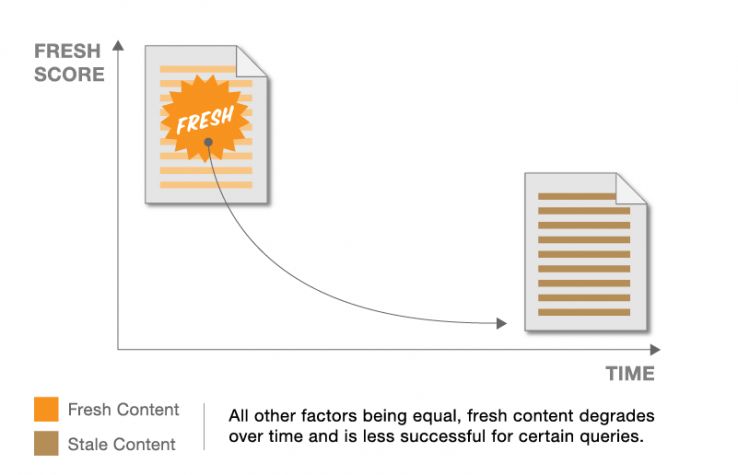
By tweaking and optimising old work, not only does it up your rankings on Google, it also makes you a more reputable and trustworthy source.
You can have loads of information on your page. But what use is any of it if it is out of date and of no use to your target audience?
Allocating some time to keep your content up to date will also mean people will be more engaged with your content, too. Naturally, this means that they will spend longer on your page. Choosing to read more of your great content or, they will keep you in their mind and seek more of your work out in the future.
Optimising your content for SEO isn’t just great for SERP performance and your consumers, it’s a really good exercise to be able to see what you do well and what you don’t do so well.
Optimising upgrades your skill set
When you’re in the midst of creation, being able to actually evaluate your work for what it is doesn’t come easily. You’re more attached to it because you’ve put so much time and effort into it and we all become our biggest critic.
The magic happens when you go back to it after some time. You have forgotten about it completely until someone mentioned it to you again or it cropped up on your page. But, in that moment, you can read over it with a new set of eyes and see your work for what it is.
Maybe you use some of the same words too often, maybe your voice is too passive or your sentences too long. This is your opportunity to learn from your own mistakes and find a way to make them benefit you.
In a nutshell, optimising your blog posts for SEO is something that everyone who writes a blog should be doing. It is one of the simplest ways to bring in those results you desire, it saves you time and you improve your skill set along the way.
How to optimise your blog posts for SEO
So, now you know. Optimising your work leads to more traffic on your site, better quality content and the ability to improve on your skill set.
Trying to optimise your work when you haven’t done so before might lead you to feeling slightly confused.
Is there a specific website to use? A checklist? How do you even know if you’re doing it right? How do you know if it is working?

Luckily for you, I spend a big chunk of my time optimising my own copy and the copy of others.
In the next part of this blog, I am going to be taking you through how I go about optimising content so that you can follow along and do the same thing.
All rise for evergreen, optimised blog posts that get results!
1. Make sure that your content has a plan and the proper research
Using a content plan
Every business that created content should have a plan in place.
It will allow you to be organised and strategic when creating new content, as well as optimising the older stuff. You content plan should be fairly in-depth for it to be a really useful tool.
We have created a our own detailed Content Plan template in Google Sheets - our clients have access to it too! It has everything one needs to plan and action blogging at a Ninja Level. If you are interested in getting a copy for yourself, and some strategic consulting on how to use it appropriately, please get in touch!
If you want to know more about creating a content plan that will engage the pants off your audience, the blogs linked below are perfect for you.
- How to build a behavioural content plan that works incredibly well
- 4 steps to a powerful blog content plan
- Content plans are awesome... & why you should care
When you choose to optimise blog posts for SEO, you can bring these into your plan, among the new content you aim to create, so that you can see everything that needs doing by when.
Get yourself organised and then you can dive in to the optimising itself.
Keyword research
The first thing to do when you have a nice content plan to work with is to conduct some keyword research.
Mangools is the perfect tool to help you out with this. All of the features on Mangools are brilliant when you’re working on SEO first content. (Of course, other platforms offer great keyword tools too, we are just discussing the one we use - plus it's pretty affordable.)
The feature I want to focus on for this part is called the ‘KWFinder’.

In this, or your preferred SEO tool, you will be able to search a relevant keyword or keyphrase that relates to the blog topic your post is about.
Please note - Although you have already chosen a topic and written a blog about it, it's important to review whether the topic is of interest to your audience. If it's not, you'll need to get creative with how you rewrite your blog to be of interest. That's part of how you optimise for SEO, make sure its something people will actually search for!
Once you've entered your search term, you can see what the search volume is for that word or phrase. The higher the search volume the more searches per month it receives on platforms like Google.
It also shows how difficult it would be to rank for that word or phrase. The difficulty rating refers to the competition for that keyword, so the lower the better here.
Keywords can be a tricky thing to get your head around. Mangools have a great blog that paints the picture perfectly. Take a look Keyword Tripod Rule: How to choose keywords for SEO?
Find the best keyword from your initial topic, then rewrite your blog with that new keyword in mind. But, before you do, I'd like to share some best practices with you.
Best practice tips for optimising your blog posts
As I mentioned earlier in this blog, another SEO tool of choice for the Ninjas is Yoast.
When using WordPress (our CMS of choice), you can download the Free or Premium version of the Yoast plugin. It works really well for us because once you’ve created your content in WordPress, it will flag up exactly what needs to be improved on. If you’re unsure on how to do what it is asking of you, it will link you to a lesson on the Yoast website.
In essence, do the hard part (the copy) and Yoast will help you with the rest to reach SEO heaven.
However, if you use any other CMS platform, which doesn't offer the Yoast plugin integration, don't panic! Before I take you through exactly how I do it, I’m going to talk you through some good writing habits to get into that will help you make sure your blog posts are up to scratch. Regardless of the tool you choose.
Content editing skills for optimisation
Keywords / Keyphrases
These are important! The keywords and phrases that you choose and the way that you use them can be a massive factor in determining how well you rank in search engine results. Before finalising your blog, you will want to make sure you have used your main keyword in a few specific ways:
- An exact match of it in your blog title
- In your meta description
- In your URL slug
- In the first sentence of your copy
- In some of your headings and subheadings
- Consistently used throughout your copy without overkill (aka keyword stuffing). How many times depends on how long your blog is, and is called keyword/keyphrase density. Yoast has some great information about it here).
Using your keyword / keyphrases in this way will mean you’re well on your way to writing some great SEO first copy.
Links
Any relevant links that you put within your copy will work to your benefit for a few reasons.
- Internal links - Linking other content from the same site not only creates a better user experience and it keeps the viewer locked in to your content instead of going elsewhere. It also helps search engines navigate your page so that they can rank you accordingly.
- External links - These links will send readers to another website. Connecting your page to another helps search engines crawl the web. The more you do this, the more connected you become and the higher you rank.
Here's an example of how Yoast SEO Premium shows your SEO performance in WordPress:
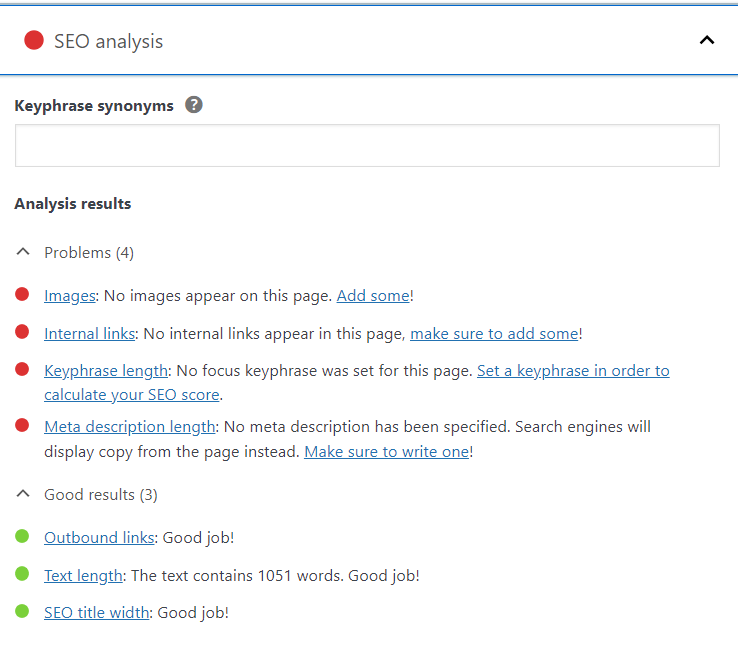
Readability
You can hit every single nail on the head in terms of your content plan, use of keywords, links and images.
But, if your copy isn’t easy to read, no one is going to spend their time trying to decipher what it is that you’re trying to say. Making sure your text is easy to read improves user experience and engagement. When optimising, you want to keep an eye out for:
- Sentence length - Shorter sentences are easier to read and understand. This keeps users on your page for longer and helps the information you are giving make sense.
- Paragraph length - No one wants to look at a paragraph and feel overwhelmed. Making sure none of the paragraphs in your copy are too long will help for the reasons stated above in sentence length.
- Sentence variety - In order to keep your content interesting, you want to make sure that your sentences are varied. When writing consecutive sentences, it’s important to make sure they don’t all start in the same way.
- Subheading distribution - Using your subheadings to split effectively will mean that it is easier for users to find the information that they're looking for within your copy. It also makes for an easier reading experience. A good rule of thumb to go by is: No more than 300 words per heading.
Here's an example of how Yoast SEO Premium shows your Readability performance in WordPress:
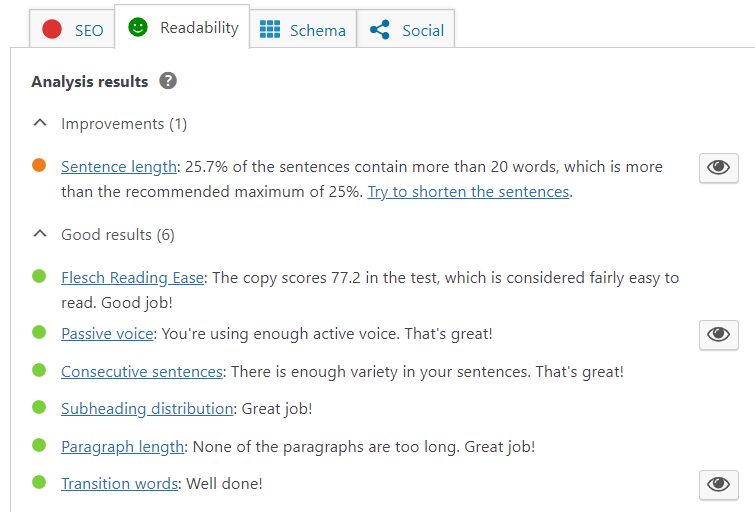
As you can see above, it will give you a traffic light colour. The aim of the game is that you’re able to get a green light for readability and SEO.
Once it has shown you what needs to be improved, the next step is to get your head down and edit.
If you’re anything like me, I remember looking at this analysis for the first time and thinking:
Meta description? Passive voice? SEO title width?

When you take a deep dive into optimising your work for the first time, it can take a lot of brain effort.
Now you can see why it's easier to create content with SEO in mind from the get go! But, blog optimisation is a game-changer if you already have lots of content on your website, that hasn't been touched in an age.
Your doing it to increase traffic, build trust and likeability with you brand, educate your audience, and give them what they want and need. If you can do all that with content, you are already in a great place with your marketing strategy.
Are you ready to optimise blog posts for SEO?
So, there you have it. Everything you need to be able to optimise your old work or even begin to write new copy that will be SEO-friendly.
As I mentioned before, it can take a little time to get used to writing in a way that generates traffic and gets you ranking on SERP. But, I have faith that you will get there!
If you haven’t already, the time is now to start blocking out some time to optimise your old blog posts.
If you’ve reached the end of this post and you think that you could use a helping hand when it comes to optimising and creating content for SEO, get in touch. Remember, we have all the expertise and the templates to go with it. Easy breezy!

